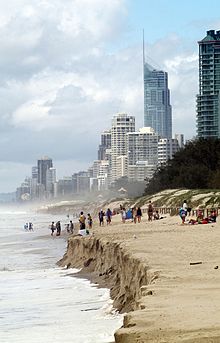Last week we were at 78 degrees to 82 degrees here on the coast. Today it's 5 pm and likely didn't go above 55 degrees all day. I woke up this morning to fog so thick along the coast that I could only see about 1/2 block in distance and that's all. I took my father to see the high tide of the King Tides the morning. However, it wasn't as impressive as the low tide I saw yesterday. I was standing yesterday when on any normal day I would have been at least waist deep in the ocean and could have walked about 1 block more out into the ocean and still have been dry just getting through a couple of puddles of ocean less than two feet deep to get there amid all the rocks and seaweed waiting for the ocean to come back in. We usually have King Tides in December and January for a couple of days each. However, if there is a big storm when they arrive it causes coastal flooding too. But, no storms today so the paved roads along the ocean weren't covered with seaweed redwood floating logs and limbs or sand and other debris so they didn't have to close the roads during this King Tide. I also took my wife and youngest daughter to see the high tide of the King Tides today. Here is more information on King tides worldwide:
begin quote from:
King tide
This article needs additional citations for verification. (September 2012) |
A king tide is an especially high spring tide, especially the perigean spring tides which occur three or four times a year.
King tide is not a scientific term, nor is it used in a scientific context. The expression originated in Australia, New Zealand and other Pacific nations to describe especially high tides that occur a few times per year. It is now used in North America as well,[1] particularly in low-lying South Florida, where king tides can cause tidal flooding.
Definition[edit]
King tides are the highest tides. They are naturally occurring, predictable events.
Tides are the movement of water across Earth's surface caused by the combined effects of the gravitational forces exerted by the Moon, Sun, and the rotation of Earth which manifest in the local rise and fall of sea levels. Tides are driven by the relative positions of the Earth, Sun, Moon, land formations, and relative location on Earth. In the lunar month, the highest tides occur roughly every 14 days, at the new and full moons, when the gravitational pull of the Moon and the Sun are in alignment. These highest tides in the lunar cycle are called spring tides.
The proximity of the Moon in relation to Earth and Earth in relation to the Sun also has an effect on tidal ranges. The Moon moves around Earth in an elliptic orbit that takes about 29 days to complete. The gravitational force is greatest when the Moon is at perigee — closest to Earth — and least when it is at apogee — farthest from Earth — about two weeks after perigee. The Moon has a larger effect on the tides than the Sun, but the Sun's position also has an influence on the tides. Earth moves around the Sun in an elliptic orbit that takes a little over 365 days to complete. Its gravitational force is greatest when the Earth is at perihelion — closest to the Sun in early January — and least when the Earth is at aphelion — farthest from the Sun in early July.
The king tides occur at new and full moon when the Earth, Moon and Sun are aligned at perigee and perihelion, resulting in the largest tidal range seen over the course of a year. So, tides are enhanced when the Earth is closest to the Sun around January 2 of each year. They are reduced when it is furthest from the Sun, around July 2.[2]
The predicted heights of a king tide can be further augmented by local weather patterns and ocean conditions.
References[edit]
General references[edit]
Inline citations[edit]
- ^ "Hurricanes leave Florida coasts vulnerable to 'King tides'". The Big Story. Retrieved 2016-10-14.
- ^ Tidal Variations — The Influence of Position and Distance NOAA ocean service education
External links[edit]
- EPA King Tides Factsheet —
- EPA page on king tides and climate change —
- oceanservice.noaa.gov — NOAA National Ocean Service
- NOAA tool for predicting tide events —
- Tides and water levels — NOAA tides tutorial
- King tides photo initiative — North Carolina, US
- King tides photo initiative — Washington State, US
- King tides photo initiative — Oregon, US
- King tides photo initiative — Long Island Sound, US
- King tides photo initiative — Barnegat Bay, US
- King tides photo initiative — Australia
- King tides photo initiative — New South Wales, Australia
- www.thesinkingoftuvalu.com — King Tide / The Sinking of Tuvalu
- King tides photo initiative —Hawaii and Pacific Islands King Tides Project



No comments:
Post a Comment